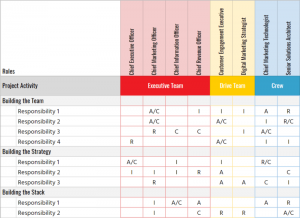by Charlene Weisler, Op-Ed Contributor, November 16, 2016
Ross McCray, co-founder and CEO, VideoAmp, studied math and astrophysics at UCLA before he dropped out and moved to media technology. As an early technologist in the YouTube space, he supported viral video before starting VideoAmp in 2014 to “enable advertisers and content owners a way to transact cross-platform, seamlessly solved from a software perspective.”
Charlene Weisler: Ross, describe VideoAmp’s cross-platform capabilities.
Ross McCray: Our Advanced Television advertising platform enables advertisers to run cross-screen video campaigns that combine the efficient targeting of digital video with the reach of broadcast TV.
Additionally, ATV uses data from our user graph that connects households and devices to viewing behavior. This enables advertisers to plan, buy, package, and measure the success of de-duplicated and precisely targeted campaigns that reach broadcast TV, VOD, OTT, desktop, and mobile audiences.
Weisler: What metrics do you use or have developed?
McCray: We are focused on digital data mapped to linear viewership and can provide metrics such as incremental reach, de-duplicated audiences, concentration scores and indexes. The industry needs to stop using demographic data and GRPs to program television advertising and start using digital data to get more precise and superior reporting, and normalize that data against Nielsen or comScore.
Weisler: What data do you receive and how do you collect and consolidate it?
McCray: We see all types of data in the streams we receive. There is traditional panel measurement where you subscribe to a digital panel of about a 20,000 household size. We approach data across devices so our datasets are much larger than the traditional panels.
We use cookies, mobile and other devices and use both deterministic and probabilistic modeling to match and authenticate. And we have agreements around TV consumption data and extrapolate.
We also receive data directly from set-top box and smart-TV manufacturers using ACR.
So we essentially receive data from three categories of sources on a second-by-second basis. We attach node devices to cross platform devices where we associate this with cookies and mobile devices into a unique user.
So for example, we can look at a user who comes up in the data and we ask, ‘What do we know about this guy?” We know he saw this ad twice on linear TV last week. Should we feed him this exact same ad again?
Weisler: Is your data really second by second?
McCray: Every set-top box is different. However we access data every quarter-hour, coupled with ACR vendor data, which reports every second. It also depends on what you define as a view. We can get to that level of granularity using cable apps and defining what a view means.
Weisler: How do you deal with privacy issues if you can get down to the individual user?
McCray: VideoAmp adheres to the Digital Advertising Alliance’s self-regulatory Principles of Online Behavioral Advertising. While VideoAmp itself does not engage in Online Behavioral Advertising, certain VideoAmp Services enable its customers to use audience data to enhance their targeting of ads.
Furthermore, as the privacy standards around advanced advertising continue to evolve, we make sure we are always compliant and within the guidelines of all the regulatory bodies like the DAA and NAI, as well as all federal guidelines and the TV consumption device’s Terms of Service.
MediaPost.com: Search Marketing Daily
(100)







